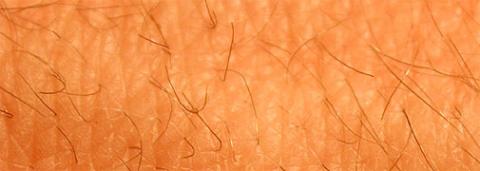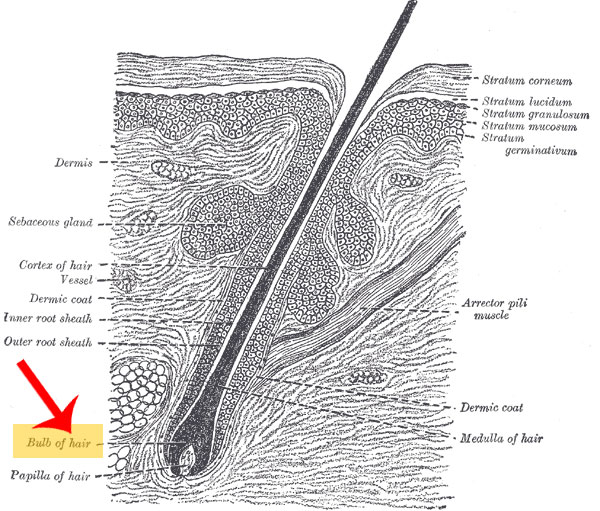
In order for repigmentation to occur in vitiligo, pigment cells must be found in one of these three locations: the hair follicle unit, the border of a vitiligo lesion or unaffected melanocites within depigmented areas.
Pigment cells found in the bulge region of the hair follicle are the most important sources for providing immature pigment cells that originate repigmentation. Melanocytes are present in large numbers in hair follicles and when stimulated they migrate towards the skin. An interesting fact is that regions lacking hair such as palms, soles and mucosal areas are particularly resilient to therapy because the melanocyte reservoir is missing . However a diffuse repigmentation pattern is seen, raising the question of an additional reservoir in the rete pegs outside the hair follicle.
In order for repigmentation to occur from hair follicles it is necessary to stimulate melanocyte production (using UV treatment) and migration toward affected skin. Ultraviolet light is know to produce two effects on vitiligo skin: immunosuppresion (stop melanocite destruction) and stimulation of growth factors.
The presence of pigmented hairs in regions of vitiligo depigmentation is a good sign for vitiligo recovery, showing clues to the existence of a pigment cell reservoir. In some patients, the autoimmune attack on pigment cells may be so severe that melanocytes also disappear from all three locations above. If pigment cells are not found in any of these locations, melanocyte transplant may be the best therapeutic approach.

References
Falabella, R 2009, 'VITILIGO AND THE MELANOCYTE RESERVOIR', Indian Journal of Dermatology, 54, 4, pp. 313-318, Academic Search Complete, EBSCOhost, viewed 8 October 2011.